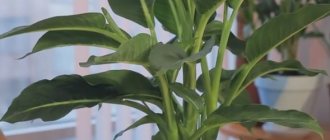Eustoma is known to us under another name as the Irish rose. This crop is suitable for growing both in greenhouses and indoors.
Eustoma inflorescences are similar in shape to roses and are good in bouquets. You can be convinced of this by looking at a photo of perennial eustoma.
Features of caring for eustoma
The process of growing and caring for lisianthus is not easy, since the plant requires diffused bright lighting and fresh air. When growing at home, it is better to place the pot with the plant on an east or west window. It is important to maintain the temperature within 19-22 ºC with frequent ventilation. Regular watering with soft, settled water is also required, the main thing is to prevent the soil from drying out and becoming overly moist. It is prohibited to spray foliage as this will lead to diseases.
Varieties of culture
Today, breeders have created a huge number of hybrids of various shapes and various colors. As a rule, manufacturers indicate the height of the plant on seed packets. When purchasing, you should also take into account the timing of flowering, since the period of bud formation varies greatly. Many of the resulting cultivars are combined into variety series.
For cutting, tall (about 1 meter) varieties are usually selected that look great in bouquets: “Echo”, “Aurora”, “Flamenco”, Heidi and many others.
Low-growing lisianthus will effectively replace fading plants in a flowerbed, for example, they will cover the exposed “legs” of lilies, and decorate the yellowing leaves of irises.
Compact bushes Mermaid (“The Little Mermaid” - in the photo), “Riddle”, “Loyalty” are also suitable for indoor growing
When choosing, they are guided primarily by the characteristics of the flowers, which can be simple, double or semi-double in shape, have the most varied colors of delicate silk petals: both single-color and variegated, two-color. The widest selection of F1 hybrids will help you create the desired color composition in your home interior and garden. The only thing that experts have not yet been able to achieve is to remove the climbing eustoma.
You can learn more about the botanical features of this herbaceous perennial and get acquainted with representatives of the most popular variety series in the article on our website.
Step-by-step instructions on how to grow eustoma from seeds
Growing lisianthus from seeds is a rather painstaking process that requires a lot of attention from the grower. To grow eustoma flowers from seeds yourself, you need to follow the following instructions.
- To perform this procedure, you will need a plastic tray and a metal grill with small windows. The size of the grid should ensure that the peat tablets are kept above the water.
- Initially, you need to pour water into the pan with the addition of a growth stimulator. You will also need to add other fertilizers, in particular nitrogen. It is recommended to add soil disinfectants to the water.
- Next, a grid with peat tablets is installed above the pan. They should barely touch the surface of the water. In this case, the tablets need to be spaced from each other at a distance of 5 centimeters. This will avoid fungal infection between seedlings.
- After the tablets swell from moisture, you need to place eustoma seeds in them. 3 seeds are planted in each peat tablet.
- The first shoots will appear 2 weeks after planting. At this time, you need to select the most developed and strong shoots. All sick and weak ones should be removed.
- It is important to place the tray with the trellis and plants in a warm room with moderate diffused lighting. The top of the tray is covered with glass or film to create optimal humidity conditions.
- It is necessary to ventilate the seedlings daily, without temperature changes or drafts. If the peat tablets dry out, it is recommended to carry out additional watering.
- After 5.6 leaves appear on the young plants, the cover can be removed from the tray.
- Next, transplant the eustoma along with the peat tablet into its own flowerpot. The transplantation process should be carried out in the evening.
eustoma seedlings
Brown and burgundy
In addition to popular colors of inflorescences, such as white, pink or purple, there are varieties of eustoma with a rather amazing palette of colors. We have selected several unusual varieties for you.
"Deep Brown" in the episode "Rosanne 2". A tall variety with a standard double flower, but of rare color. The color is translated as "dark brown", but it is described as lavender brown.
"Brown" in the series "Rosanne1". This variety is from the same series, only with the first group of flowering. It is difficult to describe the color palette of the inflorescence in one word. You can say lemon color, turning into a light brown shade with lilac notes or close to burgundy color.
In what situations is a transplant needed?
The process of planting and transplanting eustomas is extremely painful and cannot take root in a new pot for a long time. Moreover, at home, these flowers do not grow for long - about two years, so the transplantation process is not advisable. Still, a transplant is needed:
- When buying a young plant at a flower shop. Lisianthus must be replanted within three days after purchase.
- In the case when the root system has completely filled the space of the pot. This happens extremely rarely and is typical for adult plants.
- In case the seeds were planted not in peat tablets, but in a common container.
In any of the options, you need to remember that the transplant must take place together with the mother lump of earth from the previous place of growth.
Types of Irish rose eustoma - brief botanical information
Perennial eustoma is a delicate and luxurious flower that came to our country from Central and South America and immediately won the hearts of many gardeners. In nature, only blue and purple flowers exist, but thanks to the efforts of breeders, varieties of various shapes and colors have been developed.
The flower is original not only for its beauty, but also for its various names. In each country, the plant has its own name: in Ireland - Irish rose, in Japan - Japanese, in France - French love rose, and in Ireland - Irish rose or Texas bluebell. Eustoma is also called lisianthus, which means “bitter flower” in Latin. The flower received its second name for a reason, since it belongs to the Gentian family and contains a large amount of gentianin, genceopecrin and genteamarin. All these poetic names are true and show the love of many countries for this amazing and unusual perennial.
Lisianthus and eustoma are the same plant
How to plant in open ground
Purchased or independently grown eustoma seedlings can be planted in open ground in a garden or flower garden. Since this is a fastidious plant, in order for it to take root, you need to take into account some factors.
First of all, it is important to decide on the landing site. This should be a draft-free area in partial shade. In this case, you need loose soil that can drain water well.
Before planting, the soil is dug up using a spade. At the same time, the soil is fertilized with complex mineral fertilizers (nitrophoska, azofoska or the like). If the soil is highly acidic, it will be necessary to add wood ash or dolomite flour.
After mixing the fertilizers with the soil, level the area and make shallow holes where the seedlings are placed. After planting, careful watering is carried out. It is important that water does not get on the foliage. In addition, the area is mulched with peat.
Care involves constantly maintaining the soil in a loose state with optimal moisture. Remember: if there is insufficient watering, the eustoma may drop its buds or dry out completely. It is important to promptly remove weeds from the garden bed. Tall varieties are tied up.
During the open ground season, the plant will need to be fertilized 2-3 times. You should not exceed the recommended amount; it is better to even reduce the concentration. In case of frequent rains, it is recommended to carry out the prevention of fungal diseases.
general information
Among experienced gardeners, eustoma is also known as lisianthus, Japanese rose or Texas bell. And all because botanists from the USA and Japan were involved in breeding and selection. Thanks to their efforts, eustoma can now be grown even at home, in a greenhouse or in the garden.
Domestic species are smaller and simpler in color, but garden ones stretch up to 90 cm and come in the rarest shades. The eustoma flower resembles a large (up to 8 cm in diameter) cross between a rose and a poppy. The buds bloom one by one and retain their beauty and freshness for a long time, even when cut in bouquets.
Photo: sv.hobbygaiety.com
The stems of eustoma are highly branched and dotted with large leaves, as if covered with wax. All tall varieties produce long stems, which are cut for decorative purposes. Sometimes up to 30-35 buds are formed on one peduncle.
Eustoma grows in the south of North America, but it quickly conquered all of Europe. In the Netherlands, where gardening has long been a real art, it is one of the top ten flowers for cutting and sale.
In everyday life, one-year-old eustoma is more often grown because it is not as capricious as two-year-old. In addition to tall ones, there are also short ones that decorate gazebos and balconies. Flowers can be single or double, depending on the variety.
Photo: liveinternet.ru
What to look for when choosing eustoma?
If you plan to plant a flower in open ground, then you should pay attention to tall varieties. They are more resistant to negative influences. Low-growing ones are the best option for a home or greenhouse. When purchasing seeds, it is important to clarify the height of the adult plant and the flowering period.
Not unimportant indicators when choosing are indicators of resistance to temperature fluctuations and light deficiency. Taking these parameters into account, you can choose the best option for any region of the country.
Lighting, as well as temperature, which is necessary for growing eustoma
In order for the eustoma to delight you with its flowers, it is necessary to provide it with good lighting, but despite this, direct rays should not fall on the flower itself. As for humidity, the flower is very susceptible to changes.
But despite the fact that the plant is very whimsical, it is very easy to choose the temperature for it, the main thing is that the temperature is not less than 10 degrees.











